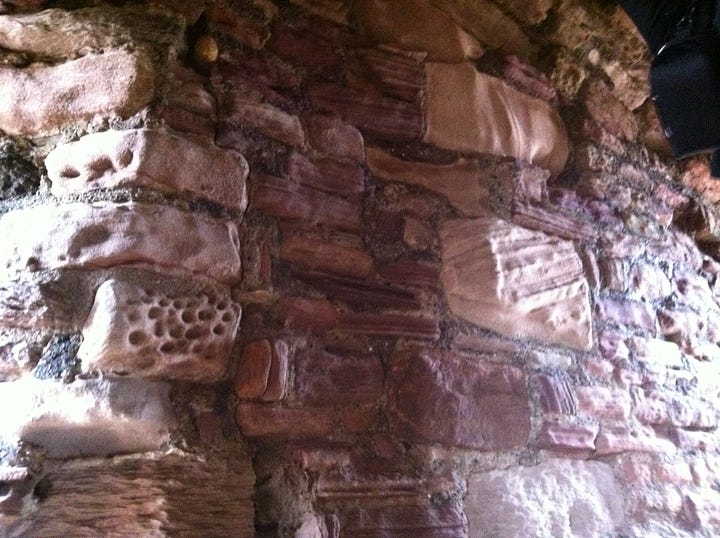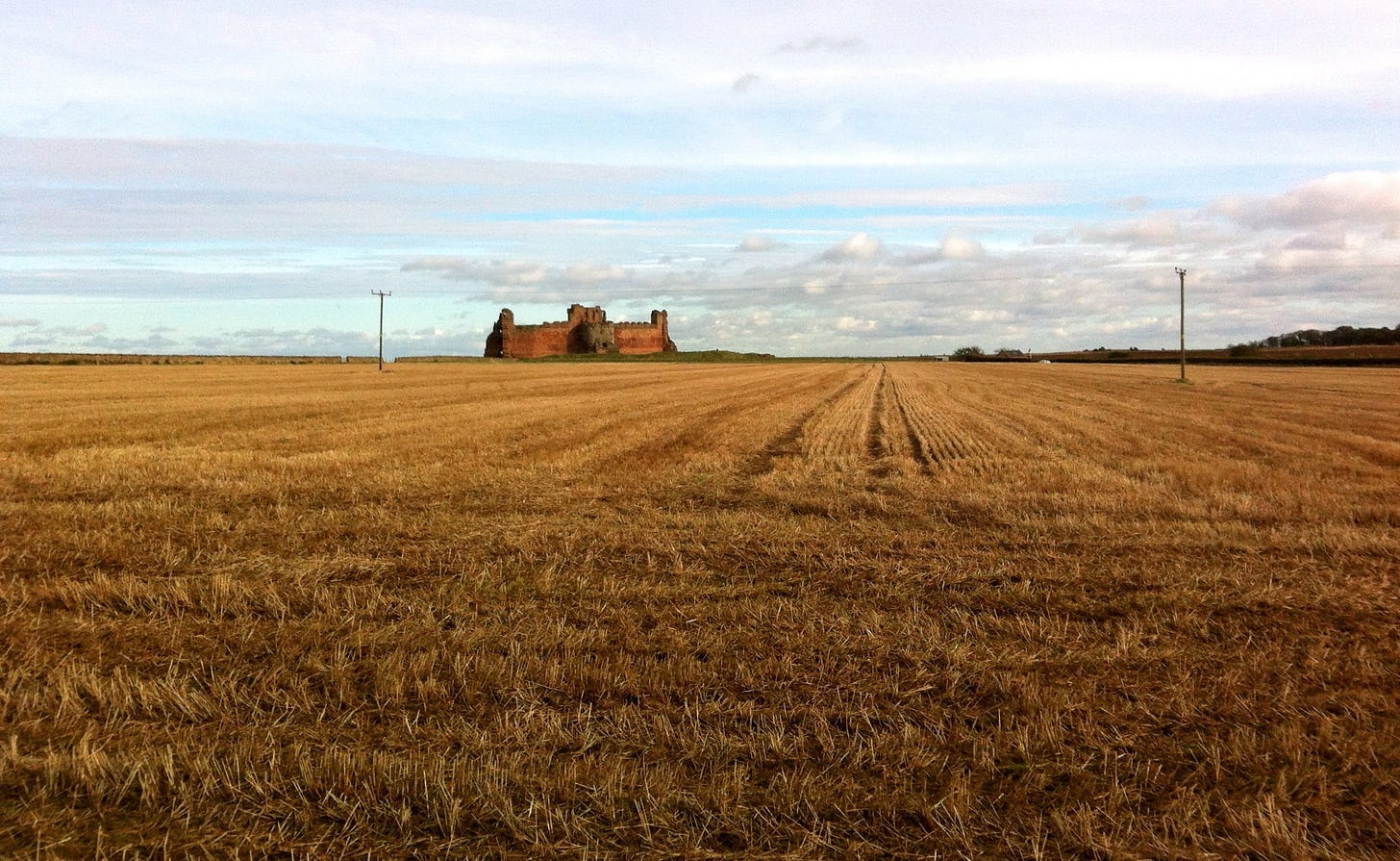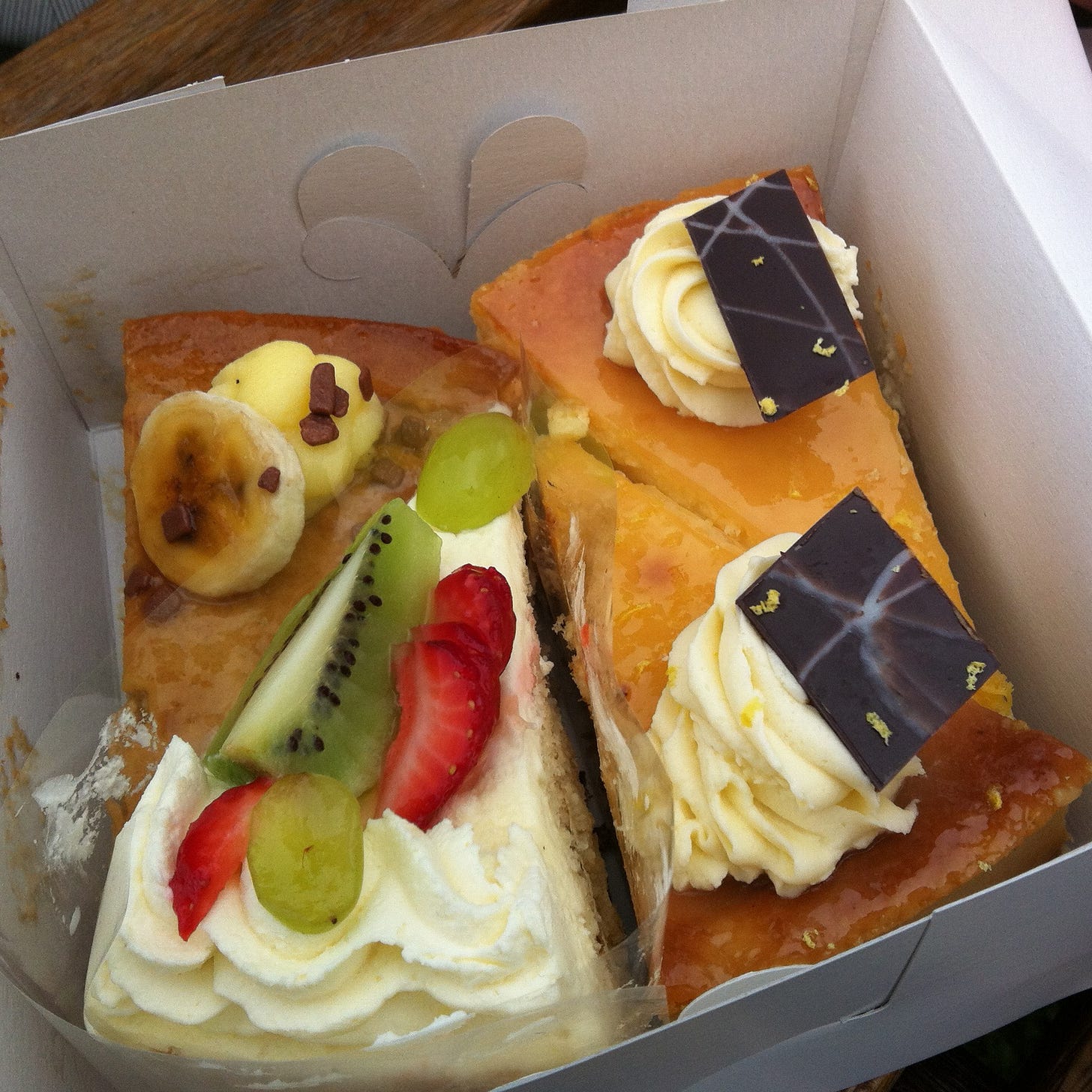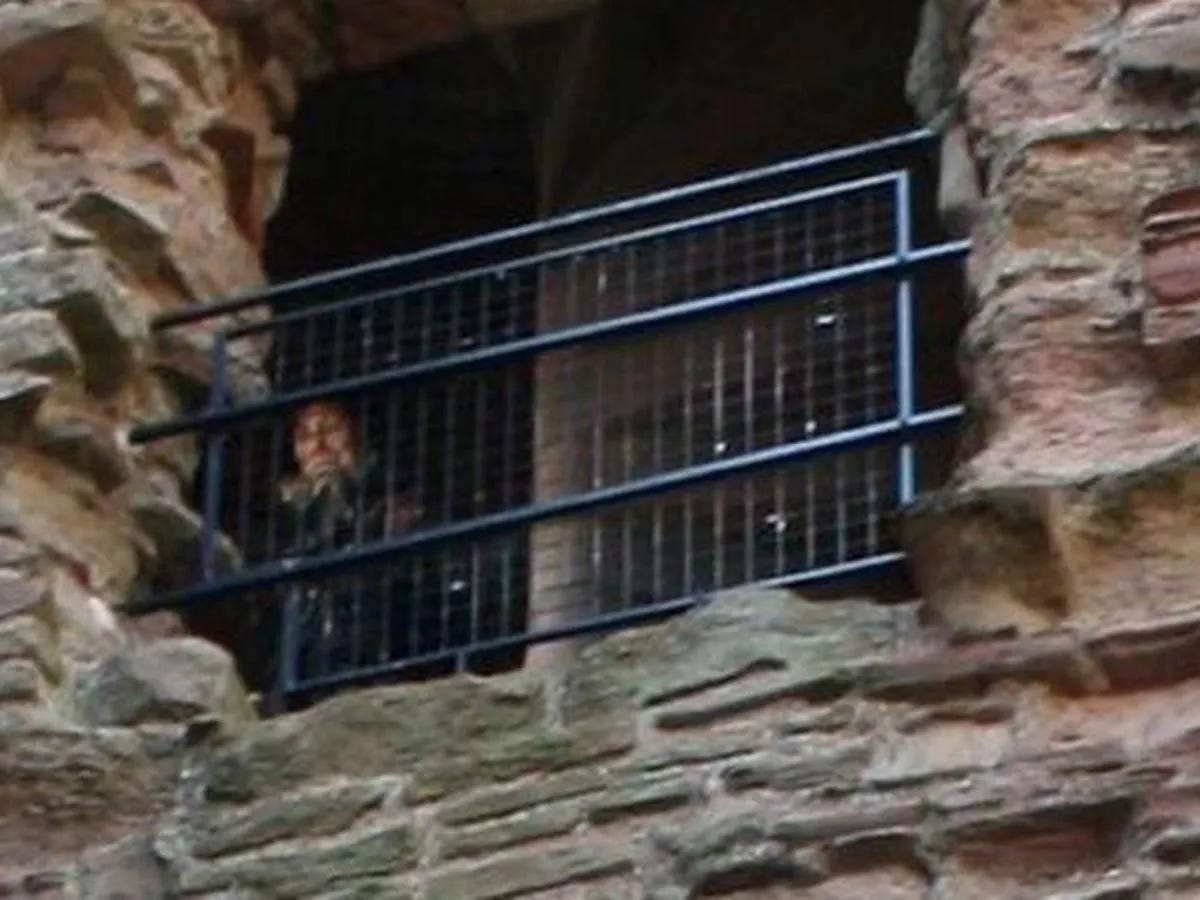Investigating the Ghost of Tantallon Castle
What a famous castle photo can teach us about ghost images and human perception
Originally published on the Hayley is a Ghost blog in 2011.
I recently went to meet a Scottish ghost.
More specifically, I went to visit a set of stone steps and a windswept doorway at Tantallon Castle in East Lothian, Scotland – the spot where one of the most widely shared ghost photos of the last couple of decades was taken.
Getting there felt like a small quest in itself. I’d been told there was a bus from North Berwick train station to the castle. There was not.
So instead, I hobbled my way along a three-mile route with a sore leg, an unreasonably heavy backpack, and three much fitter companions: Ash Pryce, Keir Liddle, and Adam Cuerdan from Edinburgh Skeptics, whom I’d known for some time but hadn’t met in person before. The walk took us along pavements, roads, and grassy verges with the coastline in view almost the whole way (plus a mysterious diversion around some tennis courts that Keir swore was a shortcut.)
At one point, Ash leapt into oncoming traffic to rescue a dropped bottle of Coca-Cola, which was nearly the end of both him and my nervous system. But that’s another story.
By the time we reached the castle, I felt less like a bold investigator and more like someone who had crawled out of the sea. Thankfully, Adam had come prepared: he produced an assortment of excellent cakes, and we sat on a bench overlooking the castle and the sea, eating sugar and forgiving the entire walk.
Only then did we go in to meet the “ghost”.
The Tantallon Castle Ghost Photo
If you’ve never come across the Tantallon Castle ghost photo, the basic story goes like this:
In 2009, psychologist Professor Richard Wiseman asked the public to send him their ghost photos and among the submissions was a shot taken by a man called Christopher Aitchison on a visit to Tantallon Castle in East Lothian. In his photo, taken looking up towards an upper doorway, is a figure in the opening that he didn’t recall seeing at the time.
Tantallon itself is spectacular. The castle stands right on the cliff edge with views of the coastline and the Bass Rock out to sea. The day we visited, the wind was fierce, the sky kept shifting from grey to moodier grey, and there was a hint of rain – in other words, perfect castle weather, if you’re the type of person who gets excited about investigating haunted places.
The photo had already caught the imagination of a lot of people by this point, including psychologist and investigator Professor Richard Wiseman, who wrote about his attempt to recreate the image. He showed that by kneeling on the landing behind the safety rail, he could produce a remarkably similar effect. Some critics argued this wasn’t a true recreation because the original figure appeared to be standing, not kneeling, and so the debate continued with two main hypotheses circulating:
A person passing through the doorway at the time the photo was taken.
A visual illusion created by the way light falls on the stonework – potentially a case of pareidolia, where our brains find meaningful shapes (like faces or figures) in random visual noise.
Climbing Up to the “Haunted” Landing
The area where the photo was taken is a small landing high up in the castle. There are two doorways leading onto it and a staircase that continues upwards. Halfway up those stairs sits a window, which lets in light that falls across the stone in interesting ways.
Standing there in person, I could see why the light-and-stone hypothesis had legs. The stones are irregular, and the light shifts constantly as the weather changes. It felt entirely plausible that, from the right angle and at the right moment, you could capture something that looked like a cloaked figure without there being anyone there at all.


The frustrating thing about illusions like this, though, is how hard they can be to reverse-engineer. You can see that something could create the effect, but pinning down exactly which stones at exactly which angle and time of day produced the original image is tricky.
So we decided to test the other hypothesis too: that it was simply a person.
Adam, wearing a dark coat and hat, volunteered to go up onto the landing while the rest of us stayed on the ground level, roughly where the original photographer had been. From below, Adam moved in and out of the doorway, pausing at different spots.
Very quickly, we realised how easily a normal human being could become an ambiguous shape in that space. At certain angles, Adam’s figure blurred into the shadows and railing; he stopped being “our friend Adam” and started to look like a generic robed shape. If you didn’t know he was there – or you weren’t paying attention to the landing – it would be surprisingly easy to spot him later in a photo and feel unsettled.
Did We Rule Out Pareidolia?
Pareidolia is still a strong contender for what’s going on in the original photo.
Our human brains are wired to find patterns, especially faces and human figures. That’s useful when you’re trying to spot predators in the bushes, but less helpful when you’re looking at low-resolution images of stone walls on the internet. Once someone suggests, “That looks like a person,” it becomes very difficult to unsee the person, even if you know it might only be light and shadow.
To really test the pareidolia idea properly, you’d need to observe and photograph that landing across different times of day and in different weather conditions to see how the light plays out across the stonework. Without that systematic observation, we can’t rule it out.
What we can say is that both explanations – a real visitor passing through, or an illusion created by lighting – are ordinary, earthly possibilities that fit the evidence just as well as, if not better than, a ghost. Indeed, based on our visit and our little experiment, I’m not convinced there’s anything paranormal in the original Tantallon Castle photograph.
Seeing Adam on that landing, blending into the shadowy doorway and fading into the stone behind him, pushed me firmly towards the “person walking past” hypothesis. If Professor Wiseman had taken his comparison shot standing slightly further back on the landing instead of kneeling, I suspect fewer people would have complained that his recreation wasn’t close enough.
Interestingly, people connected with the castle and the local area seemed broadly unconvinced by the ghost interpretation too. And perhaps most tellingly of all, those who have studied the case told me that the person who took the original photo never claimed it was a ghost in the first place.
A weird shape appeared in their picture, they asked what it might be, and the rest of us did what people always do: we filled in the gaps with stories.
Tantallon Castle as a Case Study

Tantallon isn’t just a beautiful castle with amazing views (although it absolutely is that, and if you get the chance to visit, you should). It’s also a neat case study in how ghost stories grow.
You start with an ambiguous image, a dramatic setting, and a lack of clear information about what was happening at the time. Add in our tendency to see human shapes where none exist, plus our love of a good spooky tale, and suddenly a stranger on a staircase or a trick of the light becomes “the ghost of Tantallon Castle”.
That’s not to say people are foolish for being intrigued by the photo. Curiosity is good. But when we treat every odd image as potential proof of the paranormal, we flatten out the more interesting lessons - that our perception is fallible, our memories are patchy, and our stories are powerful.
For me, visiting that windy landing in person didn’t “debunk” the photo in some triumphant way. It simply made the ordinary explanations feel more real, more solid underfoot – like the stone steps themselves.
And yes, I do miss it already.
Huge thanks to Edinburgh Skeptics for helping make that visit happen, and to Ash, Keir, and Adam for the company, cake, and near-death fizzy drink incident.





